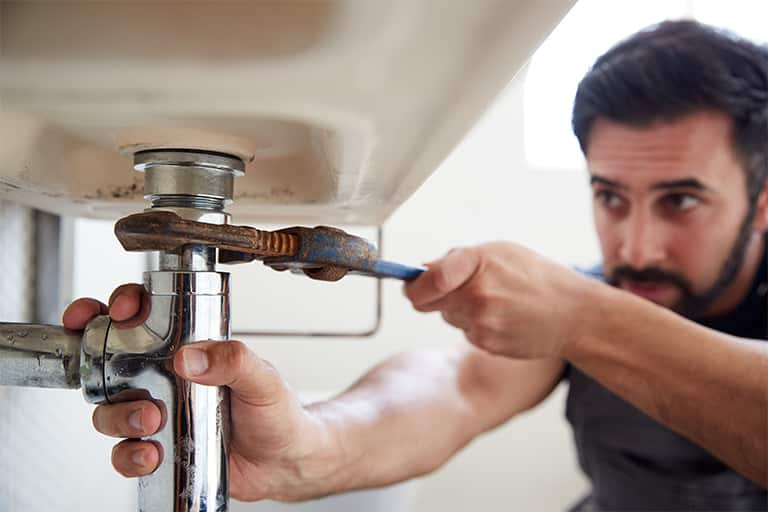How to Inspect If Your Home Has a Covert Leakage
How to Inspect If Your Home Has a Covert Leakage
Blog Article
Presented here down the page yow will discover a bunch of worthwhile content regarding Locating water leaks.

Early detection of leaking water lines can mitigate a potential calamity. Some small water leakages may not be noticeable.
1. Examine the Water Meter
Every house has a water meter. Checking it is a guaranteed manner in which aids you discover leakages. For beginners, switch off all the water sources. Guarantee no person will flush, make use of the faucet, shower, run the washing machine or dishwasher. From there, most likely to the meter as well as watch if it will certainly alter. Since nobody is using it, there ought to be no activities. That shows a fast-moving leakage if it relocates. If you detect no changes, wait an hour or 2 as well as examine back once more. This suggests you might have a slow leak that might even be underground.
2. Check Water Consumption
Evaluate your water expenses as well as track your water usage. As the one paying it, you ought to observe if there are any discrepancies. If you find sudden changes, in spite of your usage being the same, it implies that you have leaks in your plumbing system. Remember, your water bill should drop under the very same variety on a monthly basis. An unexpected spike in your bill indicates a fast-moving leak.
On the other hand, a stable increase every month, despite the very same behaviors, reveals you have a sluggish leak that's also slowly rising. Call a plumber to extensively inspect your home, especially if you really feel a warm location on your floor with piping below.
3. Do a Food Coloring Test
When it comes to water consumption, 30% comes from commodes. If the color somehow infiltrates your dish during that time without flushing, there's a leak in between the tank as well as dish.
4. Asses Exterior Lines
Don't forget to inspect your outside water lines as well. Must water permeate out of the link, you have a loosened rubber gasket. One tiny leak can waste loads of water as well as surge your water expense.
5. Examine the circumstance as well as check
House owners must make it a behavior to examine under the sink counters as well as also inside cupboards for any type of bad odor or mold growth. These two warnings show a leakage so punctual focus is called for. Doing regular evaluations, also bi-annually, can conserve you from a major problem.
If you recognize your residence is already old, keep a watchful eye on your heating systems, tubes, pipelines etc. Check for stainings as well as deteriorating as a lot of pipes and home appliances have a life expectancy. They will additionally normally weaken due to damage. If you believe dripping water lines in your plumbing system, don't wait for it to escalate. Call an expert plumber immediately so you do not wind up with a terrible mess in your house.
Early detection of dripping water lines can reduce a possible disaster. Some small water leakages may not be visible. Inspecting it is a guaranteed means that assists you discover leakages. One tiny leak can throw away loads of water and also spike your water costs.
If you presume leaking water lines in your plumbing system, don't wait for it to rise.
WARNING SIGNS OF WATER LEAKAGE BEHIND THE WALL
PERSISTENT MUSTY ODORS
As water slowly drips from a leaky pipe inside the wall, flooring and sheetrock stay damp and develop an odor similar to wet cardboard. It generates a musty smell that can help you find hidden leaks.
MOLD IN UNUSUAL AREAS
Mold usually grows in wet areas like kitchens, baths and laundry rooms. If you spot the stuff on walls or baseboards in other rooms of the house, it’s a good indicator of undetected water leaks.
STAINS THAT GROW
When mold thrives around a leaky pipe, it sometimes takes hold on the inside surface of the affected wall. A growing stain on otherwise clean sheetrock is often your sign of a hidden plumbing problem.
PEELING OR BUBBLING WALLPAPER / PAINT
This clue is easy to miss in rooms that don’t get much use. When you see wallpaper separating along seams or paint bubbling or flaking off the wall, blame sheetrock that stays wet because of an undetected leak.
BUCKLED CEILINGS AND STAINED FLOORS
If ceilings or floors in bathrooms, kitchens or laundry areas develop structural problems, don’t rule out constant damp inside the walls. Wet sheetrock can affect adjacent framing, flooring and ceilings.
https://www.servicemasterbyzaba.com/blog/how-to-detect-water-leakage-in-walls/

I am very intrigued by Finding hidden leaks and I am assuming you enjoyed reading the new blog post. Are you aware of anybody else who is truly interested in the niche? Feel free to share it. Thanks a lot for your time. Come back soon.
Report this page